By Francine Mathews
As a young girl, I read constantly and to the exclusion of the real world. This was somewhat unconscious–I could no more resist the siren call of stories than I could refuse to eat–but it was also somewhat calculated. I liked to escape. For numerous reasons too tedious to detail, I NEEDED to escape. The more distant the destination in time or place, the better. I became an early aficionado of the exotic. In fifth grade, I devoured War and Peace. It had the dual attraction of being about Russia, which in 1973 was akin to the dark side of the moon; but it was set during the Napoleonic Age, which no one could possibly remember.
Perfect. For several weeks, I became Natasha Rostova, and lived among cannonballs in 1812. It would predetermine me to love the Regency and Tolstoy forever. I studied Napoleonic France in college, and wrote my thesis on the invasion of Russia. I was, naturally, a history major.
As an adult and a writer, I have explored a number of genres. It is safe to say, however, that of the twenty-six novels of espionage, mystery, and women’s fiction that I have published, only seven may be deemed contemporary. The rest are firmly historical. They range from Jane Austen’s Regency England, to Victoria’s. From Virginia Woolf’s Bloomsbury to CoCo Chanel’s Paris and Jack Kennedy’s World War II. The destinations that most often move me, as a writer, no longer exist–they have vanished into the past. So how, as a writer, do I access them?
It’s popular and approved, at writers’ conventions, to talk fervently and rather snobbishly about research, preferably pronounced re-SEARCH, in the English fashion, as though that made it more credible. I happen to love research–I’ve often said I write particular books solely because I want to learn about their subject matter–but I recognize the inherent lie in my attempts to master a time and place.
The past is impossible to access except through an act of the imagination.
What do I mean?
I’ll give you an example.
I write a lengthy series, published over two decades, about Jane Austen as detective (under the pen name Stephanie Barron.) I have gone almost everywhere in England Austen may or may not have visited or lived. I have walked paving stones in Canterbury that her feet trod, skimmed the walls of the Wool House in Southampton her own fingers touched, gazed at views across Godermsham in Kent she may have seen. But many of these places (Portsmouth comes to mind) were bombed to oblivion in World War II, or otherwise fell victim to urban renewal; only fragments exist as they were in Austen’s day. Even her brother Henry’s home in Hans Place, London–which bears an official blue English historical plaque–has been renovated.
I read and re-read her letters. I have memorized entire passages of her novels. I studied her epoch in English history. I own an entire library of related works on her period, her art, her literature. I have read the writers she read herself, men and women of letters who influenced her, as well as those she despised and ridiculed.
All of that work is helpful. None of it has made me Jane Austen’s contemporary. We are forever separated by two centuries or more.
She lived in a world lit only by fire. We live in a digital age. Yet her words still speak to us. Ours, to her, would be incomprehensible. When I travel to Bath, and stay on the outskirts for the night in a Palladian manor, Ston Easton Park, that dates to Austen’s era, with a garden designed by a landscape architect she lampoons in her novel Mansfield Park (Humphrey Repton), I am approaching as closely as may be possible the life of a country house as she might have known it. Yet I arrive by car. My room is lighted by electricity. I watch, that evening, on the BBC, a rebroadcast of the 1995 A&E Pride and Prejudice with Colin Firth as Austen’s iconic hero, Fitzwilliam Darcy. Imagine trying to explain film–much less moving pictures–much less television–to a woman who knows only fire.
So what is a writer to do?
I have found that the most valuable sources for capturing the voice and mood of an age are the letters and memoirs written by those who lived it. Austen’s letters are collected and edited within an inch of their lives–in immensely useful ways to the modern writer; but the letters of her contemporaries are also available on used-book markets. The memoirs of Harriette Wilson, for example–perhaps the most highly-paid courtesan of Austen’s time–are totally accessible, amusingly frank, and manage to pin the most notable men of her era in terms that would make anyone but an Austen heroine blush. Similarly, the politicians of Jane’s time published their letters, as did their high-born and respectable mistresses. So did women who wrote recipe books and remedies for common illnesses. A writer can find illustrated guides to coach-building and men’s tailoring and the rituals of fencing, prize-fighting, or club life. Why is this important? Because the language lives in these pages, as it did two hundred years ago. Lady Frances Wedderburn-Webster will detail in a single page the mood of her lover, His Grace the Duke of Wellington, in the week after Waterloo. Wellington himself will note in a letter to his brother that the battle was “a damned nice thing — the nearest run thing you ever saw in your life. … By God! I don’t think it would have been done if I had not been there.” The force of his personality and the idiom of his day are in the words, as well as his unease about his own role; and all are essential to the writer who hopes to capture him as a character.
Because the language lives in these pages, as it did two hundred years ago. Lady Frances Wedderburn-Webster will detail in a single page the mood of her lover, His Grace the Duke of Wellington, in the week after Waterloo. Wellington himself will note in a letter to his brother that the battle was “a damned nice thing — the nearest run thing you ever saw in your life. … By God! I don’t think it would have been done if I had not been there.” The force of his personality and the idiom of his day are in the words, as well as his unease about his own role; and all are essential to the writer who hopes to capture him as a character. This remains true in later periods. When I decided to write about Jack Kennedy at the age of 21, during the spring of his junior year at Harvard, when he left school for six months to research his senior thesis and traveled alone through Europe at the same moment Adolf Hitler was preparing to invade Poland–I went first to his letters. Few have survived. Those that exist are in the Kennedy Library, along with his various passports from the 1930s, his school records as an adolescent at Choate, a slew of letters from a lover who signed her name in lipstick.
This remains true in later periods. When I decided to write about Jack Kennedy at the age of 21, during the spring of his junior year at Harvard, when he left school for six months to research his senior thesis and traveled alone through Europe at the same moment Adolf Hitler was preparing to invade Poland–I went first to his letters. Few have survived. Those that exist are in the Kennedy Library, along with his various passports from the 1930s, his school records as an adolescent at Choate, a slew of letters from a lover who signed her name in lipstick.
What they gave me was precious.
Jack’s idiom–his tendency to use cant from the period, like swell. His frankness. His obscenities. His obsession with the Free City of Danzig–which he believed, correctly, was key to Hitler’s takeover of Eastern Europe, and would diagram on a scrap of paper to anyone who would listen to him. His frustration, as a protected and privileged thirteen-year-old marooned in boarding school, with his privileged isolation. He wrote to his mother in 1930: Please get me a subscription to the New York Times. I didn’t even know about the economic slump and I feel like an idiot.
 |
| Jack Kennedy, right, at Choate 1930 |
This, about the Great Depression that would change the world. His passports were all temporary–in those days, you obtained one only for the length of your expected travel, and returned it when you reentered the United States–and all of them list his eye color differently. Sometimes it’s green. Sometimes it’s brown. On one, it’s listed as hazel–and I decided, as a writer, that this was probably correct. The other descriptions were errors of judgment about hazel eyes, dependent upon whatever Jack happened to be wearing and how they changed the appearance of his eyes the day the passport was issued.
I like to read books that my characters might have read during the period I’m writing about them. Joe Kennedy, Jack’s dad, was a huge mystery enthusiast. Jack read spy novels. All the Kennedys loved Ian Fleming’s Bond series, and Jack–who met him through their mutual friend, Pamela Churchill–invited Fleming to dinner at his home in Georgetown when he was a senator. So what might Jack have been reading in the winter of 1938-39?
The bestselling novel that year was Daphne du Maurier’s Rebecca. It was later used as a code-key to a German cypher, but I doubted that Jack was reading du Maurier that winter. I noted, however, that Leslie Charteris–the British novelist who created the enigmatic hero The Saint, a spy to die for if ever there was one, had also published a book that winter. Prelude for War. I’d never read it, but I found a first edition on the used book market. It’s a somber and defiant manifesto of hatred for fascism, clearly aware that Hitler would be coming for the United Kingdom within months and that people who valued The Saint would have nothing to do with him. It’s important, as a writer, to know how contemporary thriller authors in 1939 viewed the buildup to war–and wrote about it. Charteris, through The Saint, was capable of influencing the views of a huge reading public–Jack Kennedy among them.
 |
| Jack traveling in Europe, 1937 |
One item in the Kennedy library is particularly poignant to me. It’s a simple telegram from a young woman named Frances Ann Cannon, dated February 25, 1939. This is the day Jack sailed from New York to England on the Queen Mary. How do I know? He’s listed in the passenger manifest as detailed in the New York Times from that day. He’d asked Frances Ann, who was a year older and an heiress of the Cannon towel fortune, to marry him. She’d refused, because he was Irish and Catholic and Joe Kennedy’s son–and nobody’s parents approved of Joe Kennedy. But she sent him a telegram as he left the country for six months. Jack was always breaking out in hives and having fevers and vague illnesses….he told his friends it was allergies. It wasn’t. It was Addison’s Disease, but Jack had no name for it in 1939. Frances Ann telegraphed to him aboard the Queen Mary: “Stay Away from the Hay, Darling! All my love, Frances Ann.”
The telegram is in the Kennedy Library’s holdings. Which means Jack must have kept it all his life. That, too, tells a writer something.
Frances Ann got married two years later–to John Hersey, a notable war correspondent and writer. Jack was on leave and went to the wedding. Hersey interviewed him later over lunch and was the first to publish an account of PT-109, in the New Yorker. It’s still the version most worth reading.
Understanding all of these connections, the human interaction that underlies the stories, is essential to capturing time and place. When you enrich yourself with the details of actual lives in the context of their times, as a writer, the voyage of imagination into the past is suddenly not only possible–it’s exhilarating.
If you could live any time in the past, when would it be? –And how would you live your one wild and precious life?
Cheers,
Francine









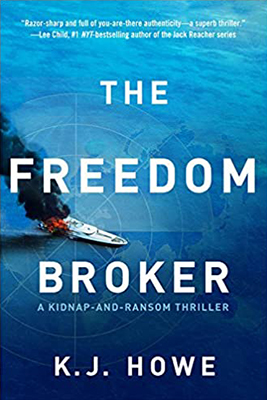










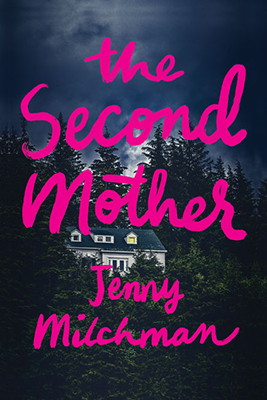
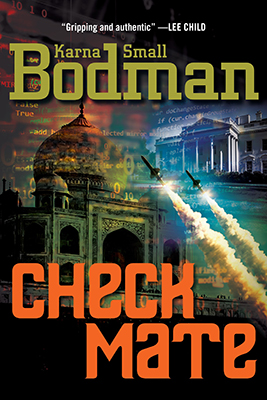






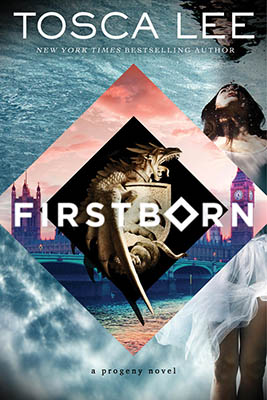












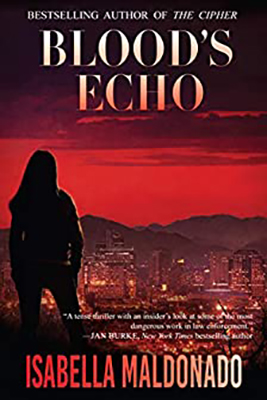







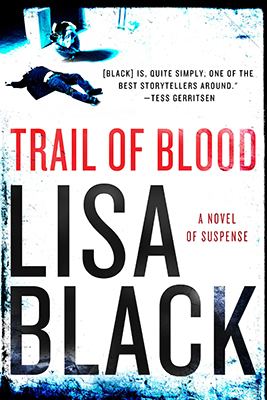
I'd like to live in Vienna in the late 1700s and early 1800s, when Haydn, Mozart, Beethoven and Schubert were turning out colossal music on a regular basis. Nothing like it has occurred since!
Love that idea. I've toyed with writing about the Esterhazy family, who were patrons of each of them. Just finished a manuscript set partly in Vienna – but in the 1890s. Also a rich period. Don't know whether you're an opera fan, but the recent Met production of Der Rosenkavalier with Renee Fleming was staged as the fall of the Australian-Hungarian empire, and it was fabulous, if you can catch a rebroadcast.
Auto correct strikes again. AUSTRO-Hungarian empire.
Oooh, I want to read the memoirs of Harriette Wilson. I love the Regency era as well, Jane Austen so your Austen novels as Stephanie Barron will be next on my TBR pile! Love this post!
And I meant "as well as Jane Austen…" sticky laptop keys deleting words!
Paris in the 1920's – as depicted in the great Woody Allen film MIDNIGHT IN PARIS – where a writer spends time with Scott Fitzgerald, Cole Porter, Ernest Hemingway, and Gertrude Stein — would be a great time to "relive" (especially if I could speak French). But reviewing your wonderful summary of travels and re-SEARCH — I am amazed that you tackled WAR AND PEACE in the 5th grade (when the rest of us were probably perfecting our hop-scotch routines). You've had fabulous travel experiences which you share with your many readers – and I especially enjoyed how you gathered the facts about Jack Kennedy and then wrote your intriguing novel, JACK 1939, which I thoroughly enjoyed.
Chalk up my early foray into Tolstoy to the BBC, Karna. During the winter of 1973 (or, my Watergate Childhood as I prefer to think of it), Masterpiece Theater broadcast twenty hours of a production that featured a very young and untitled Anthony Hopkins as Pierre. It was a lavish, fabulous, and faithful production–and because in those days, you actually had to wait an entire week for the next episode, I started reading ahead in the book. I may have skipped a passage or two about Von Clauswitz's theories of warfare.
Harriette's memoirs are wonderful. As you probably know, she solicited every man mentioned in them, prior to publication, for a payment–to have his name removed from the book. A number paid up hastily, but Wellington (one of her lovers) famously said: "Publish and be damned." She doesn't treat him nicely in the book. 🙂 I like the fact that she also had an Austen connection: Her first protector, when she was 15, was Lord Craven–a neighbor of the Austens in Hampshire. He was responsible, in a sense for the death of Cassandra Austen's fiance–a clergyman who was sent off to the West Indies by Lord Craven on one of his regimental troop ships. Tom caught malaria there and never returned home. Jane wrote scathingly one year that they'd been invited to call at Lord Craven's, "despite the trifling matter of his having a mistress now in residence." That was fifteen year-old Harriette.
Imagination, history, research, wallowing! Oh, joy, and you expressed it so beautifully, Francine.
Lord Craven. What a name… Perhaps accurate since he kept a fifteen year old mistress. Or was that considered old enough during the Regency era?
Yes and no. Remember in P&P, everyone is horrified that Wickham runs off with Lydia when she's only fifteen. But she was a gentlewoman who should have been regarded as protected, and indeed, the entire weight of her connections is brought to bear to force Wickham to marry her. Harriette had no protection or connections.